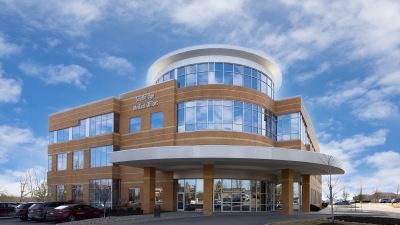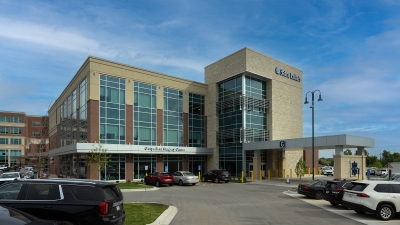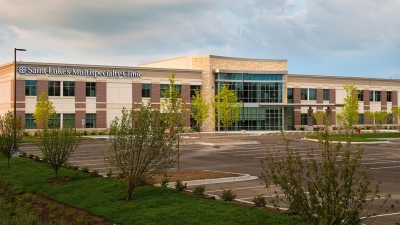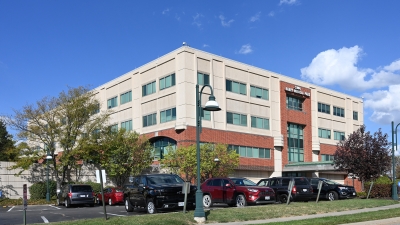Osteoporosis
Osteoporosis is a disease that causes weak, thinning bones. This puts the bones at greater risk of breaking. The bones most often affected are the hips, spine, and wrists.
What is osteoporosis?
Osteoporosis is a disease that causes weak, thinning bones. This puts the bones at greater risk of breaking. The bones most often affected are the hips, spine, and wrists.
What causes osteoporosis?
Researchers don't know the exact cause for osteoporosis. But a number of factors contribute to the disease.
Who is at risk for osteoporosis?
Women are 4 times more likely to get osteoporosis than men. Here are other things that may put you at risk for osteoporosis:
Older age. Bones become less dense and weaker with age.
Race. White and Asian women are most at risk. But all races may get the disease.
Body weight. People who weigh less and have less muscle are more at risk for this condition.
Lifestyle factors. Lack of physical activity, caffeine, heavy alcohol use, smoking, dietary calcium, and vitamin D deficiency may all increase your risk.
Certain medicines. Some medicines may increase your risk.
Family history. Having a family history of bone disease may increase your risk.
Having low bone mass (osteopenia) also puts you at a greater risk for osteoporosis.
Low estrogen is one of the main causes of bone loss in women during and after menopause. Women may lose up to 20% of their bone mass in the 5 to 7 years after menopause.
What are the symptoms of osteoporosis?
People with osteoporosis may not have any symptoms. Some may have pain in their bones and muscles, particularly in their back. Sometimes a collapsed vertebra may cause severe pain, decrease in height, or spinal deformity.
The symptoms of osteoporosis may look like other bone disorders or health problems. Always talk with your healthcare provider for a diagnosis.
How is osteoporosis diagnosed?
Your healthcare provider will review your personal and family health history and do a physical exam. Other tests include:
Bone density test (bone densitometry). This test measures the mass of bone and its volume to find the risk of getting osteoporosis.
Blood tests. These tests measure calcium and potassium levels.
FRAX score. This is a score given to estimate the risk of a fracture within 10 years. The score uses the results of a bone density test as well as other things.
X-rays. This test uses energy beams to make images of tissues, bones, and organs on film.
Women are encouraged to:
Review lifestyle practices with their healthcare provider regularly.
Have their personal risk for falls checked at least once a year after menopause.
Have their height and weight checked yearly.
Get checked for the development of a rounded humped in the spine and back pain (kyphosis).
How is osteoporosis treated?
Treatment will depend on your symptoms, age, and general health. It will also depend on how severe the condition is.
The goals of managing osteoporosis are to:
Decrease pain
Prevent fractures
Minimize further bone loss
Some of the ways to treat osteoporosis are also ways to prevent it. They include:
Staying at a healthy body weight
Doing more walking and other weight-bearing exercises
Limiting caffeine and alcohol
Stopping smoking
Getting enough calcium and vitamin D through diet and supplements
Installing hand railings, or assistive devices in the bathroom or shower to prevent falls
Asking your healthcare provider about medicines that may help
Medicines that help maintain bone health in women with osteoporosis at menopause include:
Estrogen replacement therapy (ERT) and hormone replacement therapy (HRT). ERT reduces bone loss, increases bone density, and reduces the risk for hip and spinal fractures in postmenopausal women. But talk with your healthcare provider before taking them. Research found several important health risks linked to this therapy. For many women, the risks of ERT outweigh the benefits.
Bisphosphonates. These medicines reduce bone loss, increase bone density, and reduce the risk for fractures.
Selective estrogen receptor modulators (SERMS). These medicines help prevent bone loss.
Parathyroid hormone. This medicine is a form of parathyroid hormone. It helps form bone.
Monoclonal antibody. This medicine is given by shot (injection) under the skin. It’s approved for women with osteoporosis at high risk for fractures. It’s also used for women who are being treated with cancer medicines that can weaken bones.
Calcitonin. This hormone may help slow bone loss. It's available as a nose spray or shot (injection) to treat postmenopausal osteoporosis.
Living with osteoporosis
An osteoporosis rehab program can be vital to a full recovery. It can help you obtain the best possible bone health and quality of life. The focus of rehab is to decrease pain, help prevent fractures, and reduce further bone loss.
To help reach these goals, programs may include:
Exercise programs and conditioning to increase weight-bearing and physical fitness
Methods to manage your pain
Nutritional counseling to improve how much calcium and vitamin D you get and to limit caffeine and alcohol
Assistive devices to make you safer at home
Education, especially on ways to prevent falls
These rehab programs can be done as an outpatient or inpatient. Many skilled people are part of the team. They include:
Dietitian
InternistYour Primary Care Doctor
Endocrinologist or rheumatologist
Occupational therapist
Orthopedist/orthopedic surgeon
Physiatrist
Physical therapist
Psychologist/psychiatrist
Recreational therapist
Rehabilitation nurse
Social worker
Vocational therapist
Key points about osteoporosis
Osteoporosis is a disease that causes weak, thinning bones. This leaves the bones at greater risk of breaking. The bones most often affected are the hips and spine.
Women are 4 times more likely to get osteoporosis than men because of a decrease in estrogen after menopause.
Risk factors for osteoporosis include aging, race, body weight, and certain medicines.
The goals of managing osteoporosis are to decrease pain, prevent fractures, and reduce further bone loss.
For postmenopausal osteoporosis in women, medicines can help maintain bone health.
Rehab programs can help regain bone health.
Next steps
Tips to help you get the most from a visit to your healthcare provider:
Know the reason for your visit and what you want to happen.
Before your visit, write down questions you want answered.
Bring someone with you to help you ask questions and remember what your healthcare provider tells you.
At the visit, write down the name of a new diagnosis, and any new medicines, treatments, or tests. Also write down any new directions your healthcare provider gives you.
Know why a new medicine or treatment is prescribed, and how it will help you. Also know what the side effects are.
Ask if your condition can be treated in other ways.
Know why a test or procedure is recommended and what the results could mean.
Know what to expect if you do not take the medicine or have the test or procedure.
If you have a follow-up appointment, write down the date, time, and purpose for that visit.
Know how you can contact your healthcare provider if you have questions.
Locations

Jacobson & McElliott Diabetes & Endocrinology Center

Rockhill Orthopaedic Specialists–Lee's Summit

Rockhill Orthopaedic Specialists–Blue Springs

Rockhill Orthopaedic Specialists–Shoal Creek

Saint Luke’s Orthopedic Specialists–Barry Road
